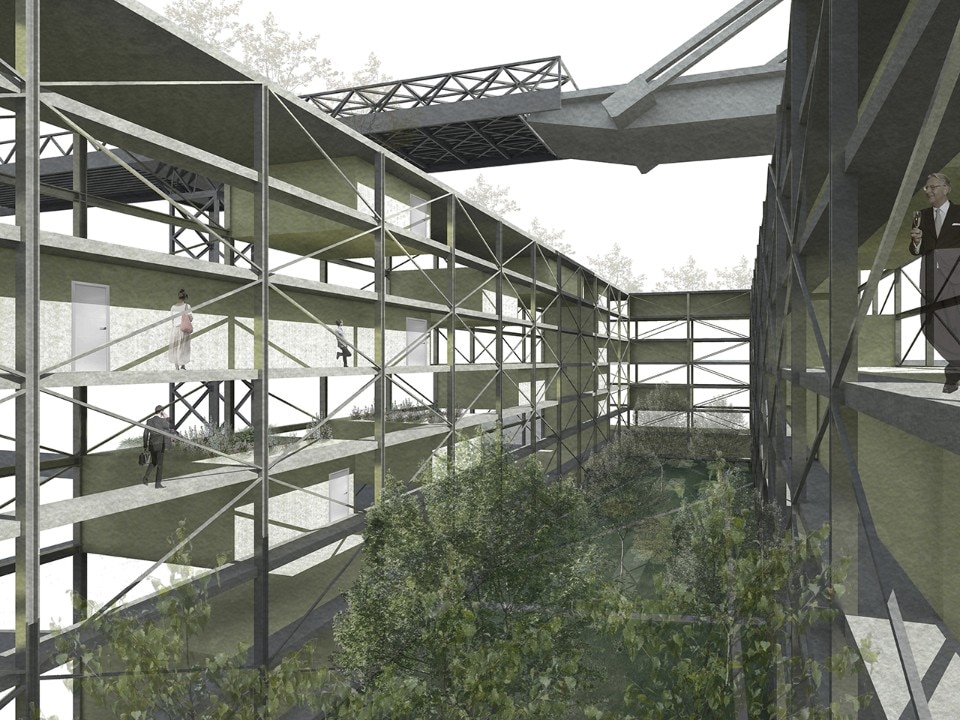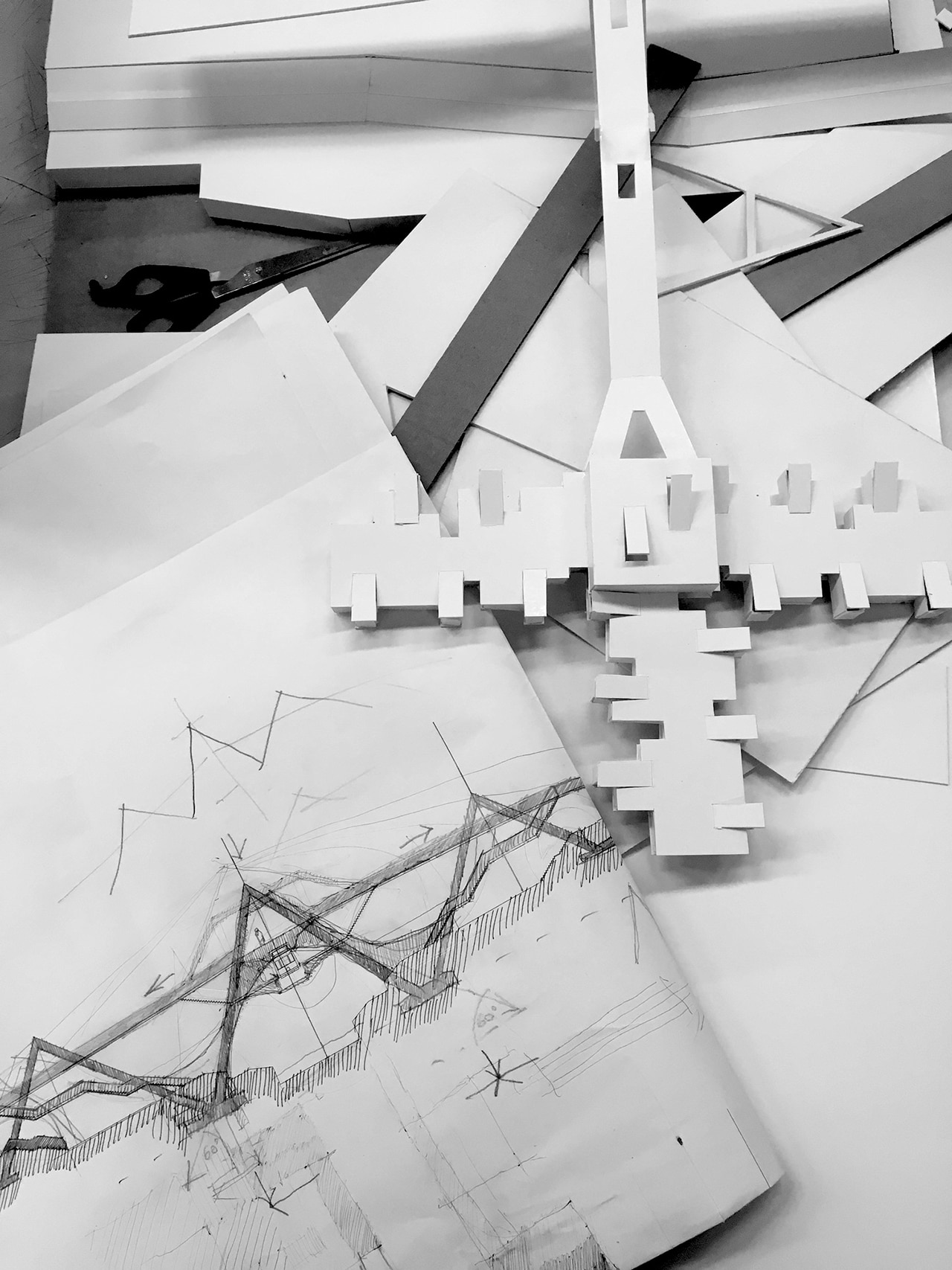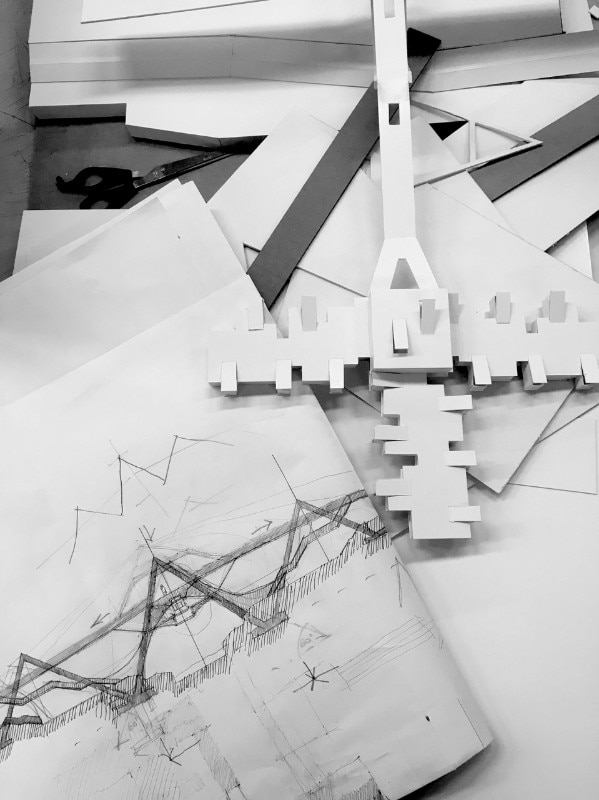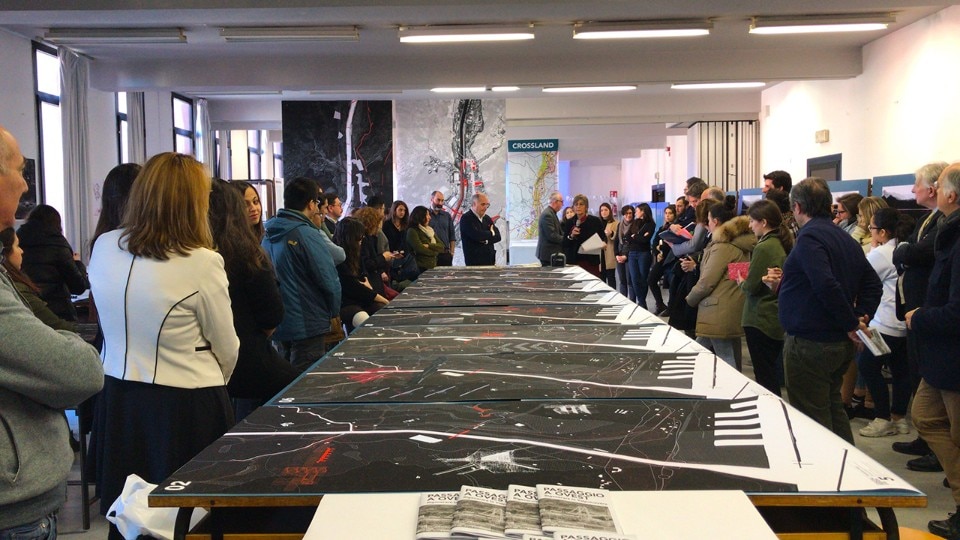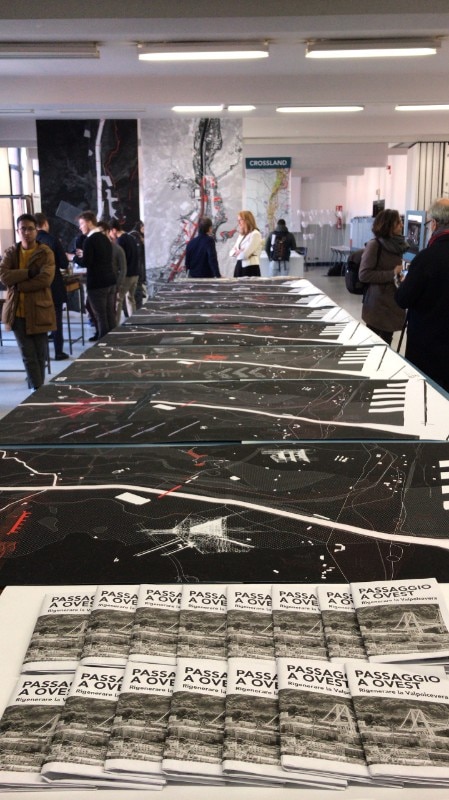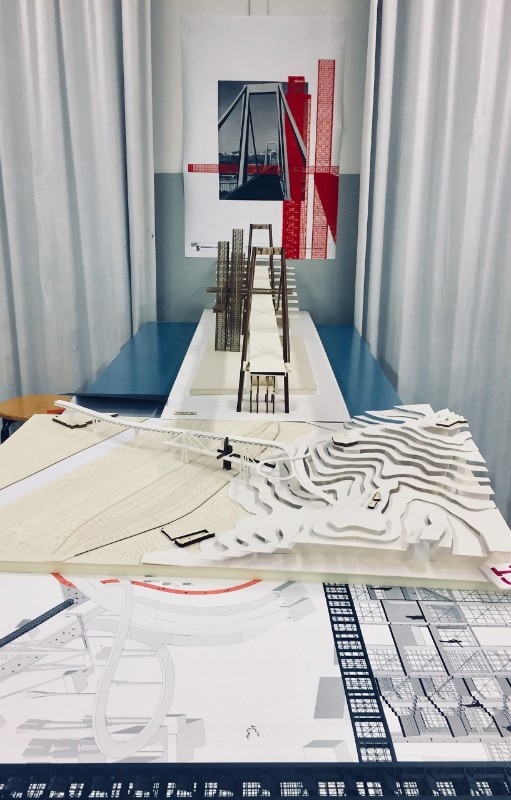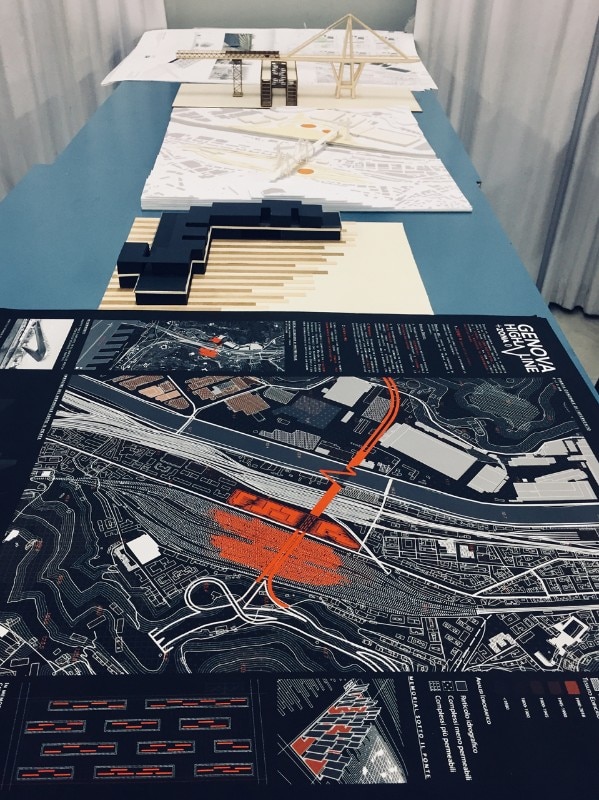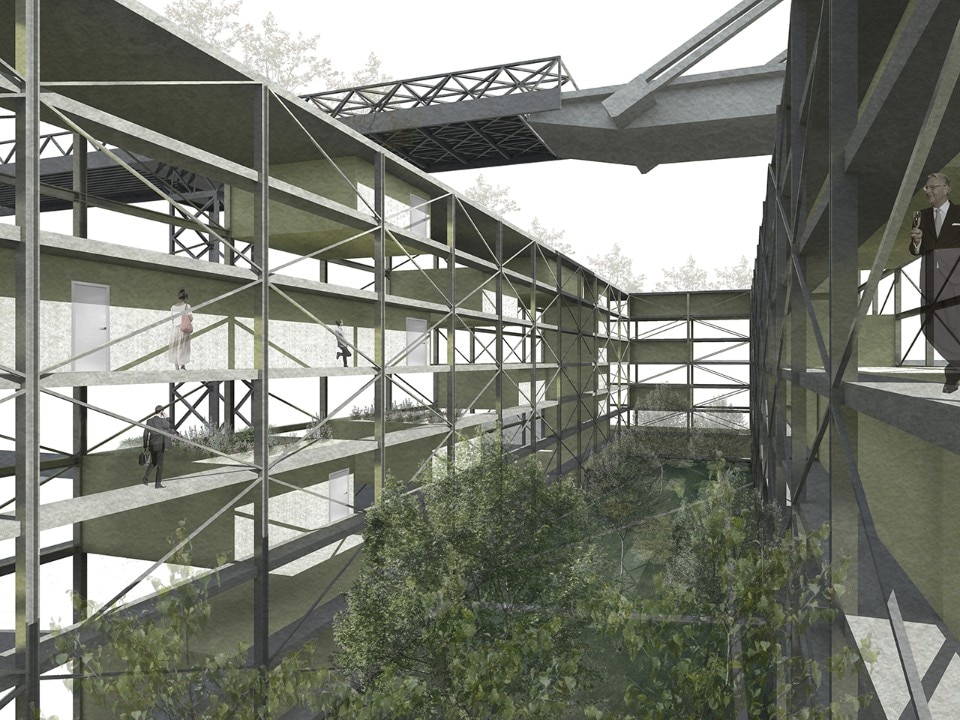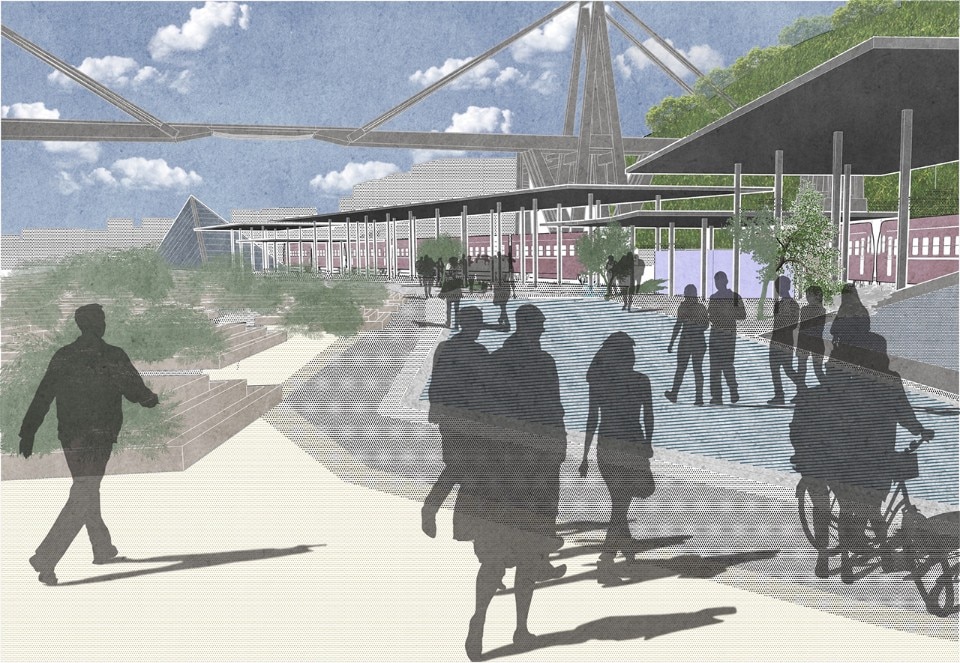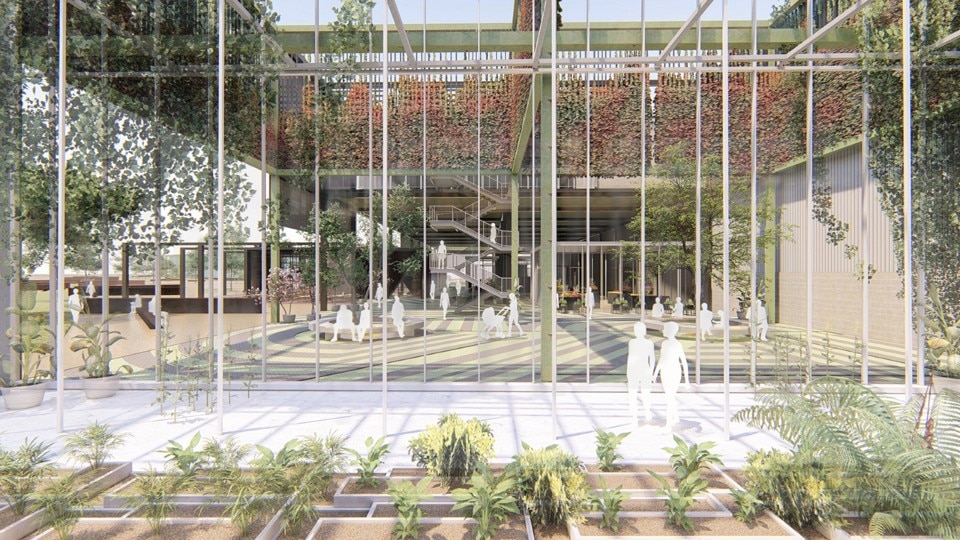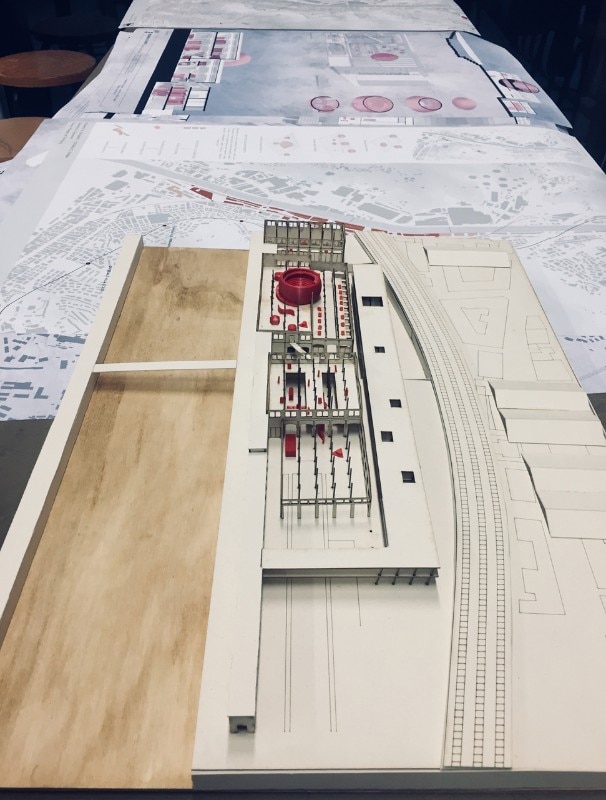The collapse of Ponte Morandi is still an unresolved wound for the city of Genoa and for the entire Italy. The tragedy of 14 August 2018 forces us to reflect not only on the state of the major works in Italy and on the fragility of our landscape – a cultural and political issue more than architectural – but also on the strategies for the recovery of an infrastructure that has local and national value.
Since last September, just one month after the tragedy, at the Faculty of Architecture of the University of Genoa, Professor Carmen Andriani has been running the Integrated Design Studio, which is focused on the regeneration of the Polcevera Valley’s entire system.
She teamed up with students from the school’s Coastal Design Lab course – in collaboration with the GigLab Urban Planning and Landscape Laboratory – to come up with alternatives to a simple replacement bridge during an intensive workshop held from 28 January to 5 February 2019. The aim is to feed a public debate on the state of Italian public infrastructures and the post-industrial development of Genoa.
“The university can anticipate solutions, can lead overall projects, can anticipate scenarios. Project is projection. This is the ambition and the task of our laboratory, which is not just a job done to pass an exam,” says Andriani.
The old viaduct over the Polcevera river “guaranteed the transport of goods and people at urban, suburban and territorial level,” she explains. “One third of the thousands of vehicles that crossed that bridge every day were trucks coming or going to the port. Val Polcevera remains the obligatory transit to Europe and, for the port of Genoa, the natural corridor to the Atlantic shore, especially to the port of Rotterdam.”
Until now, the debate on reconstruction has focused on the specific reconstruction of the viaduct designed by Riccardo Morandi from 1960 to 1967. While the demolition of the existing structure is underway, the design that Renzo Piano has donated to the city is undergoing numerous changes and has yet to materialise in a final project, of which not even the exact route is yet known publicly.
The participants of the Coastal Design Lab seek a more complete transformation of the valley. They want the area “reclaimed from the heavy metal stores left by disused industries and oil refineries, made safe from the risks of flooding and hydrogeological nature, regenerated in terms of recovery of disused buildings, with houses adapted to the most advanced European standards and new public spaces, strengthened in the system of urban services, slow mobility and transverse connections.”
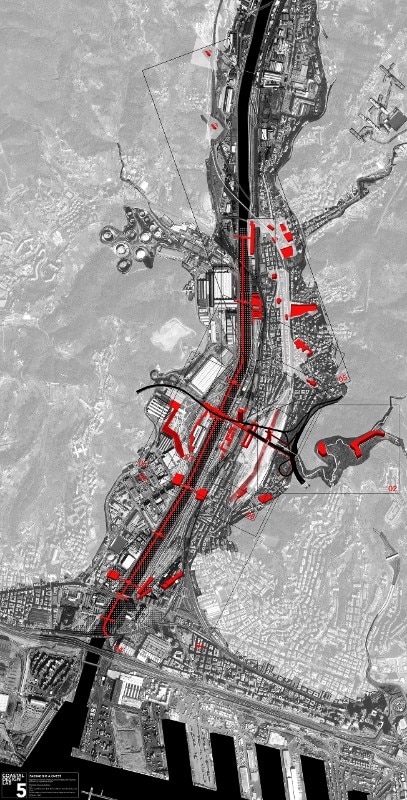
They offer a new overall vision of the Lower Polcevera Valley, a 10 kilometre stretch running from the bridge to the port, identifying a new route for the viaduct that is considered the gateway to the Ligurian capital. In their vision the collapsed bridge is partly retained and transformed into a habitable structure, offering a symbol for the city and preserving a unique period for Italian engineering.
The project adds new metal structures to the concrete artifact, scaffolding that represents a construction site in constant development, a landscape that is always temporary and under construction.
“The bridge must also be seen from below, which we consider not only its footprint, but the entire valley,” explains Andriani. “[The structures are a] potential element of pedestrian connection between its different levels, towards the paths that lead to the many architectural highlights widespread on the slopes of the hill. It becomes part of a tourist itinerary that enhances the environmental and architectural heritage of the entire valley.”
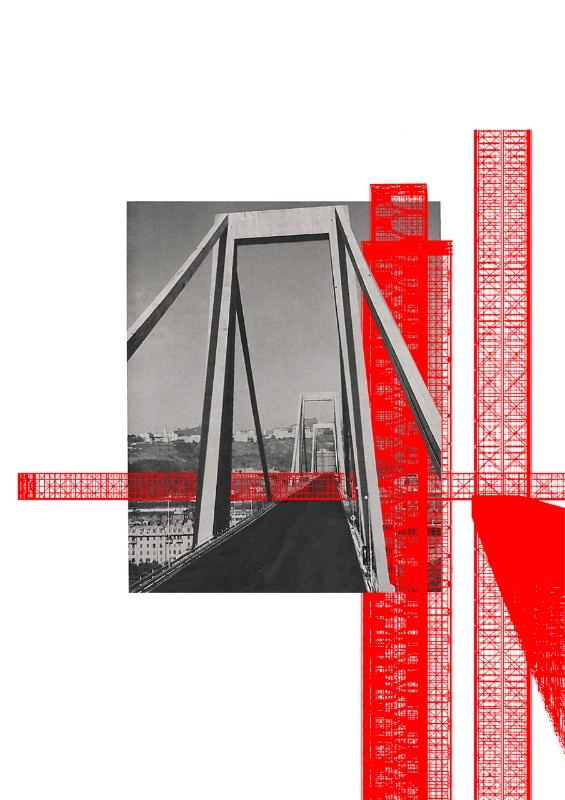
She adds: "This is not a utopian or radical vision, but a Genoese condition, or more generally a Ligurian one, that arises from the geography and topography of this extraordinary, particularly compressed city, so it is easy to find elements that hybridize architecture and infrastructure, allowing a view from above towards the sea.”
From South to North of the Belpaese, inhabited infrastructures directly connected with urban centres represent a familiar condition for Italian. On the other hand, reuse and hybridization of outdated infrastructures is an established practice at international level. This project ties up local conditions with global visions, and makes us ask a question: can we love a concrete viaduct?
- Studio:
- Coastal Design Lab
- Scientific coordinator:
- Prof. Arch. Carmen Andriani
- Researchers:
- Arch. Davide Servente, Arch. Luigi Mandraccio, Arch. Beatrice Moretti, Arch. Stefano Passamonti
- Collaborators:
- Martina Canepa, Andrea Cappelli, Alberto Gaglio, Tomaso Tedeschi
- University:
- Scuola Politecnica. Università degli Studi di Genova
- Department:
- dAD Department of Architecture and Design


